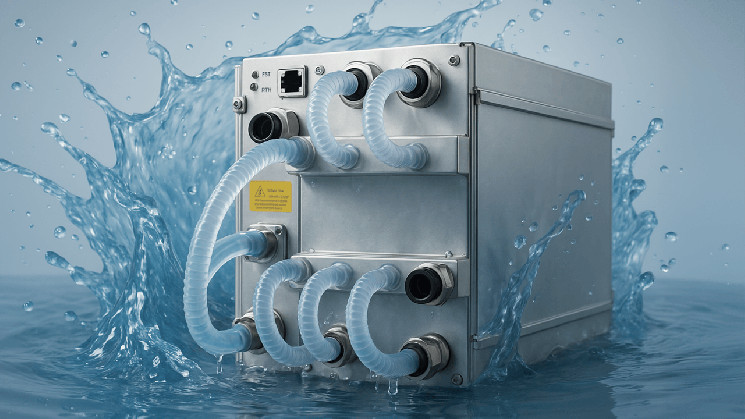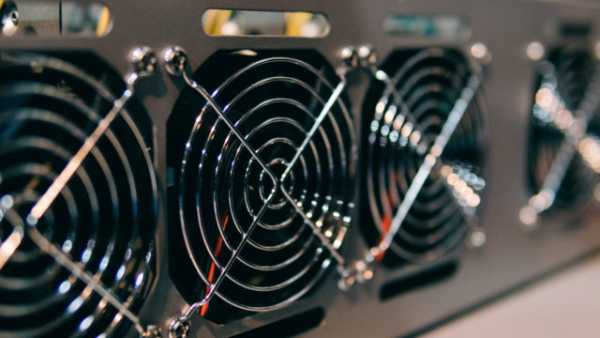Hashrate Kings – Inside the Hydro-Cooled ASICs That Will Dominate Bitcoin Mining in 2025

In the Bitcoin mining space, new technological advances have significantly increased productivity over the past year. While big players like Bitmain continue to hold the lead, newcomers like Bitdeer and Auradine are confidently entering the competitive landscape, seeking to gain prominence.
Liquid Revolution – A Look at the Cutting-Edge Bitcoin Mining Hardware of 2025
In late March 2025, Bitcoin's total hashrate reached a record high of 862 exahashes per second (EH/s), and is currently around 853 EH/s. Even though BTC prices have increased by over 26% since the halving, miners are earning significantly less than before.
However, for companies using the latest application-specific integrated circuits (ASICs), advances in technology have provided a distinct advantage. Today’s top-end mining hardware boasts hashrate in the range of 400 terahash per second (TH/s) to 860 TH/s.
 Antminer S21e XP Hydro 3U device from Bitmain.
Antminer S21e XP Hydro 3U device from Bitmain.
At the forefront of this category is Bitmain’s Antminer S21e XP Hydro 3U, which reaches a peak performance of 860 TH/s. While the Hydro 3U system, consuming 11,180 watts (W), may seem less efficient than alternatives that use 5,500 W to 7,500 W, the integration of direct liquid cooling (DLC) technology changes the performance picture.
Traditional air-cooling systems are inferior to the precision of DLC, which directs heat directly to the source. This innovation ensures consistent peak performance levels even during long, high-intensity operations, overcoming the limitations of ambient airflow.
Despite the fact that the device displays 860 TH/s, it maintains an energy efficiency ratio of 13 joules per terahash (J/T). Without a doubt, liquid-cooled systems – whether immersion or hydraulic – have become the undisputed leaders in this battle for efficiency, eclipsing older, airflow-dependent competitors.
The second place goes to the US-developed Auradine AH3880 water-cooled unit. When activated in “turbo mode,” this liquid-cooled ASIC reaches 600 TH/s at 16.5 J/T. In “normal mode,” the AH3880 runs at 450 TH/s while consuming only 14.5 J/T.
Rounding out the top three is Bitmain’s Antminer S21 XP+ Hydro, which generates 500 TH/s. This ASIC consumes 5,500 watts of power but exhibits a low energy efficiency profile of around 11 J/T. Bitmain’s device is compatible with several cooling options, such as antifreeze, purified H₂O, and deionized water.
Bitdeer also makes a hydro-cooled ASIC that generates around 500 TH/s with a power efficiency of 14.9 joules per terahash (J/T). The Sealminer A2 Pro Hydro, released this month with a power of 7,450 watts (W), operates at this level of performance.
Separately, in fifth place is the Whatsminer M66S++ ASIC from Microbt, which produces 348 TH/s under standard conditions. Overclocking can increase its output to 400–430 TH/s. The hydraulically driven device consumes 5394 W and maintains an efficiency of 15.5 J/T.
While traditional air-cooled miners continue to dominate the sector (manufacturers continue to release improved air-cooled versions), their performance is significantly inferior to their liquid-cooled competitors, which outperform their airflow-dependent counterparts.
These modern devices also operate at lower volume levels, which is a stark contrast to the cacophony of traditional machines, prompting some companies to switch to liquid-cooled fleets to eliminate acoustic complaints. On the downside, liquid-cooled systems are expensive, and their implementation requires a significant initial investment in specialized infrastructure.
Source: cryptonews.net



